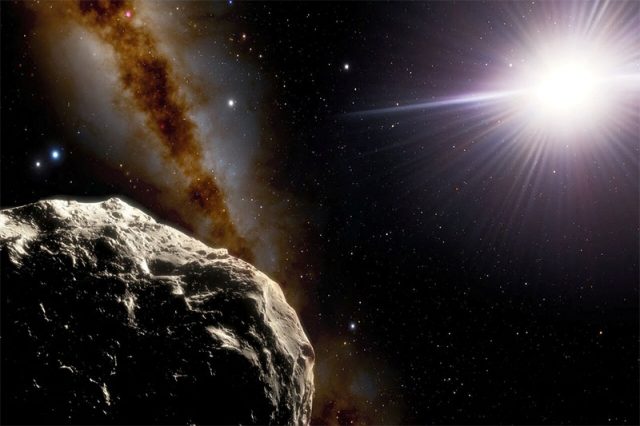
WASHINGTON — An asteroid that was discovered riding along in Earth’s orbit is about three-quarters of a mile (1.2 km) wide and might remain as a hitchhiker with our planet for at least 4,000 more years while posing no danger, scientists said on Tuesday.
Using observations from telescopes in Chile, Arizona and the Canary Islands, researchers provided the most comprehensive description yet of the asteroid, named 2020 XL5 and first detected two years ago. They confirmed it is one of only two of what are called Trojan asteroids traveling as a companion with Earth.
Trojan asteroids can be wanderers in the solar system – as appears to be the case with this one – or material left over from their home planet’s formation. They become ensnared by the planetary gravitational grip and subsequently orbit the sun along the same path as that planet.
This one looks to be a so-called C-type asteroid – one of the most common kinds in the solar system, according to planetary scientist Toni Santana-Ros of the University of Alicante and the University of Barcelona’s Institute of Cosmos Sciences in Spain, lead author of the study published in the journal Nature Communications.
These are dark in color and contain a lot of carbon along with rocks and minerals.
“2020 XL5 poses no threat to Earth. We expect it will remain in its current stable orbit for at least the next 4,000 years,” said telescope scientist and study co-author Cesar Briceño of the U.S. National Science Foundation’s NOIRLab.
Its location varies between about 56 million miles (90 million km) and 168 million miles (270 million km) from Earth.
The asteroid occupies one of five so-called Lagrange points – positions in space where objects tend to stay put. These five locales allow for stable orbits due to the competing gravitational forces of Earth and the sun. This one resides at what is called the L4 point.
The only other Trojan asteroid seen around Earth, discovered 12 years ago, also at the L4 point, and called 2010 TK7, is smaller, with a diameter of about a quarter mile (400 meters). It, too, is thought to have been captured by Earth’s pull while meandering through the solar system.
2020 XL5, first detected in December 2020 using a telescope in Hawaii, may have been captured by Earth’s gravitational pull somewhere between 500 to 1,000 years ago, Santana-Ros said.
Numerous Trojan asteroids populate our solar system, with the largest planet Jupiter known to have almost 10,000 of them, Santana-Ros said. NASA launched a spacecraft called Lucy last October to explore them. Trojan asteroids also have been found around Neptune (28 of them), Mars (four), Uranus (two) and Venus (one).
“Jupiter is a giant in all senses, also in terms of mass. It cleaned its neighboring region of other objects and gathered thousands of objects on its L4 and L5 points,” Santana-Ros said. “However, the Earth has a more delicate environment, with close gravitational competitors like Venus, Mars or even the moon. Therefore, gravitational perturbations on 2020 XL5 will eventually allow this object to escape from the L4 stability point.”
Santana-Ros said there could be more Trojan asteroids around Earth awaiting detection. The two Lagrange points where they might exist, L4 and L5, are notoriously difficult to observe from Earth.
“Any asteroid orbiting around these points will only be visible during a short time window close to twilight, at very low elevations above the horizon,” Santana-Ros added. “But if we point our largest telescopes low above horizon and close to twilight I am certain we will find more surprises.”
—Reporting by Will Dunham, Editing by Rosalba O’Brien









